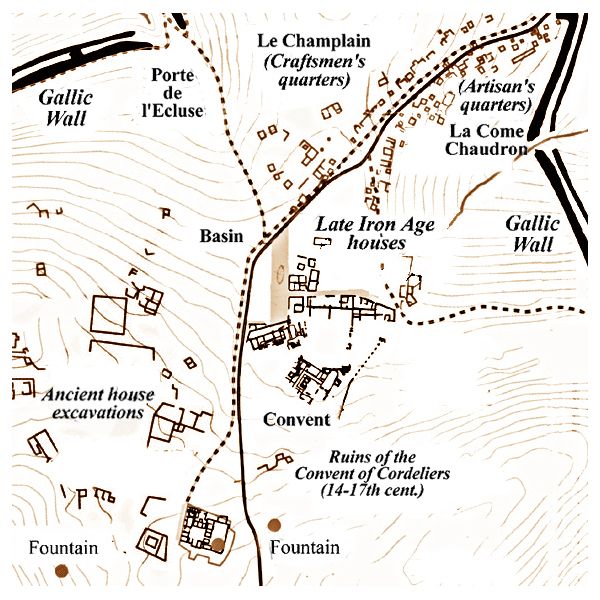Athena Review Image Archive ™
Bibracte: Plan of Gallic hillfort and ancient town

Plan of Bibracte (Athena Review Image Archive)
Bibracte
was declared by Caesar in his Commentaries on the Gallic Wars to be the
largest and richest of the towns of the native Aeduan kingdom. At that
time (58-51 BC), the Aedui served as trading intermediaries between the
Mediterranean and Northern Europe. The Aedui minted their own coins
between the 3rd century BC and 50 BC. At first using gold currency, by
120 BC they had created a silver coinage aligned with the Roman
denarius. Later in the Gallic Wars, the Aedui renounced their long-term
allegiance to Rome. At this point, in 52 BC, Bibracte hosted the
election of Vercingetorix, an Arverni nobleman, as leader of the
combined Gallic armies. This Gallic resistance was eventually defeated
by Caesar at the battle of Alésia. In 52-51 BC, just after the final
battle with Vercingetorix, Caesar wintered at Bibracte and wrote the
first volumes of his Commentaries.
By its peak in the 1st
century BC, Bibracte encompassed about 330 acres within a 5 km long
rampart. This well-fortified site was typical in its organization of
many other Celtic oppida throughout Europe. After most of the
population was moved to Autun, a fair continued to be held in honor of
the goddess Bibracte, and horse-corrals and tradesmen's booths from the
later, Roman period have been found. The re-use of a Gallo-Roman temple
as a Christian oratory and still later a Franciscan convent bear
witness to the long-term importance of the site.
On the site is the Musée de la Civilization Celtique, Bibracte.
.Copyright © 1996-2019 Rust Family Foundation (All Rights Reserved).